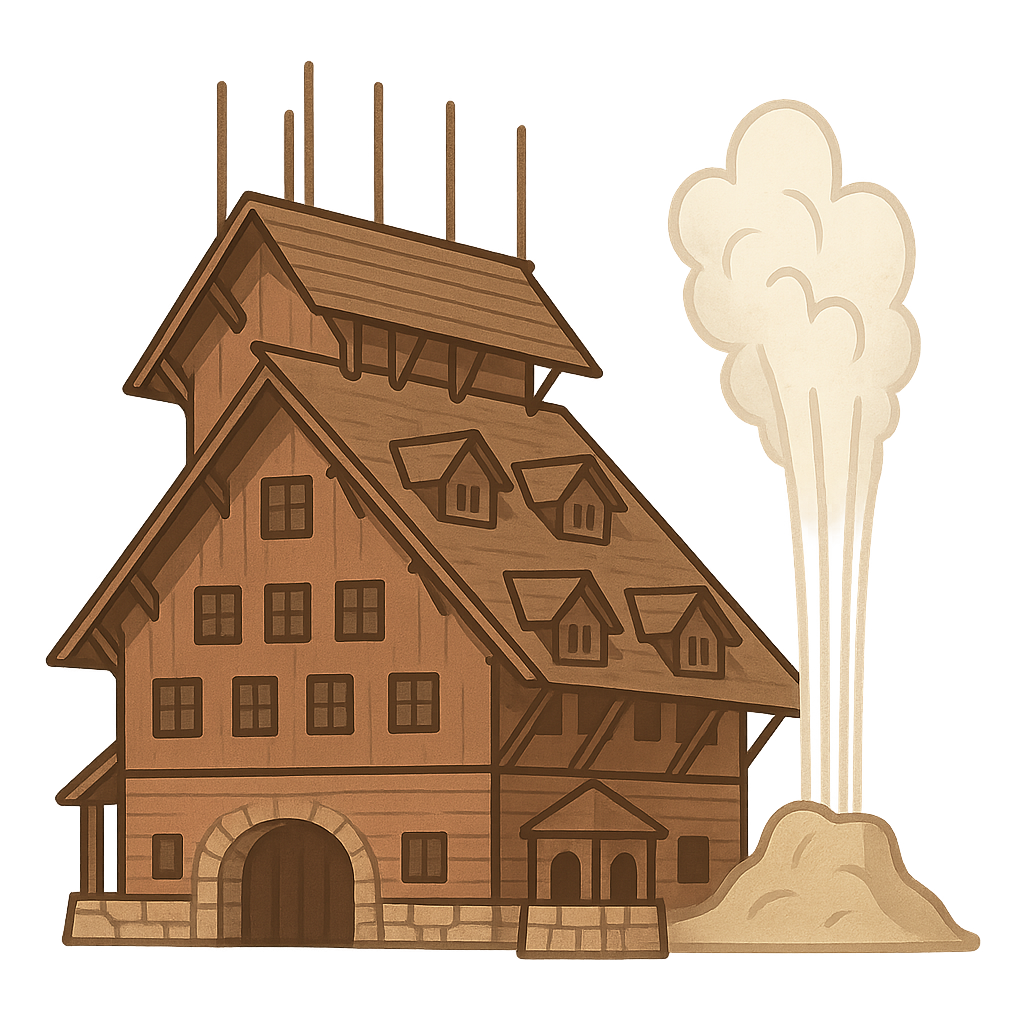I Am Yellowstone
Deep beneath your feet, I feel a rumble, a giant heartbeat that shakes the ground. Sometimes, I let out a steamy sigh that smells of sulfur, like a giant's kitchen cooking up something mysterious. My waters are not ordinary. They bubble up from the earth in pools of brilliant blue, fiery orange, and sunny yellow, shimmering like a painter's palette left out in the sun. In other places, I gather my strength and shoot towers of boiling water high into the sky, creating rainbows in the mist before they fall back to earth. I am a land of wild things. Great herds of bison, with their shaggy brown coats, roam my grassy valleys, their deep grunts echoing in the quiet air. At night, the lonely howl of a wolf pack drifts through my pine-scented forests, a song as old as my mountains. I am a place of power, of wonder, and of untamed beauty. I have watched the seasons change for thousands of years, a secret world waiting to be shared. I am Yellowstone National Park.
For a very long time, my only human friends were the Native American tribes who called my valleys home. They understood my rhythms, my fiery temper, and my gentle heart. They knew which plants could heal and which streams held the best fish. They saw the spirit in my steaming vents and respected my great power. Then, new people started to arrive. They were explorers with different clothes and languages. When they returned to their homes, they told stories of my boiling rivers and my water that shot into the sky. Their tales were so incredible that many people thought they were making them up. For years, I remained a legend, a fantastic story whispered around campfires. But then, in 1871, a special group of people came to see if the stories were true. They were part of the Hayden Expedition, led by a scientist named Ferdinand V. Hayden. He didn't come alone. He brought other scientists to study my rocks and my waters. He also brought an artist named Thomas Moran, who carried paints and brushes to capture my impossible colors. And with him was a photographer, William Henry Jackson, who used a big, heavy camera to take pictures of my grand waterfalls and mighty canyons. They worked hard, climbing my mountains and hiking through my forests. Thomas Moran dipped his brush in paint, mixing reds and yellows to show the world my Grand Canyon. William Henry Jackson captured the moment my most famous geyser, Old Faithful, erupted in a powerful blast. Their paintings and photographs were proof. They showed everyone back east that I was not a myth. I was real, and I was more wonderful than any story could describe.
Seeing those amazing pictures and paintings gave people a magnificent idea. A place as special as me shouldn't belong to just one person or company. I was too big, too beautiful, and too important for that. I should belong to everyone, for all time. So, a great promise was made. In 1872, President Ulysses S. Grant signed a special law that protected me forever. It was a new idea, and it made me the very first national park in the entire world. This promise means my forests will not be cut down, my rivers will run clean, and my animals will always have a wild place to call home. It means that families can come to visit me, to stand in awe as my geysers erupt and to watch bison graze peacefully in the meadows. I am a living library of nature's stories, and that promise keeps my pages open for everyone to read. So when you visit, listen closely. You can hear my story in the roar of a waterfall, the whisper of wind through the lodgepole pines, and the deep rumble of the earth. I am here for you, a treasure to protect and a wonder to explore for generations to come.
Reading Comprehension Questions
Click to see answer
